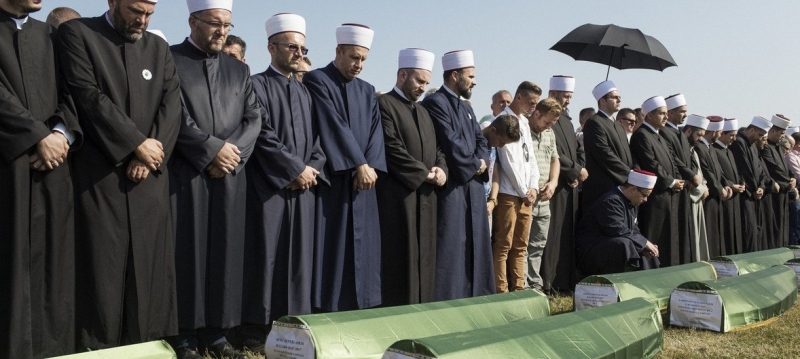
The protection of the dead is regulated by religious, cultural and social practices throughout the world. UN Special Rapporteur: “Respect for the dead is what makes us human” Human Rights
In April 2021, Morris Tidball-Bintz, a forensic scientist and national of Chile and Argentina, was appointed as the UN Special Rapporteur on extrajudicial, summary or arbitrary executions. At the 56th session of the Human Rights Council in Geneva, he presented a report, “Protection of the Dead,” in which he shared his views on why the protection of the dead is a significant human rights issue.
“Protecting the dead and showing respect for them is what makes us human,” the Special Rapporteur is convinced. – People have followed these principles since the beginning of human existence in all cultures and religions. Today, the protection of the dead is governed by religious, cultural and social practices around the world, national laws, as well as international humanitarian law, which applies in times of war.”
The investigation of all potentially unlawful deaths by states and authorities is a responsibility under international human rights law, reminds Morris Tidball-Bintz. A proper investigation into a potentially unlawful death requires the body of the victim so that the investigation can be conducted in accordance with international standards. On the other hand, there is the right of families to mourn and return the remains of their deceased loved ones. In some cases, conflicts arise between rights. For example, many religions require funeral rites within 24 hours of death. This may be cremation in Hinduism, Buddhism and Jainism or burial in Islam and Judaism.
Right to Truth
“It is one of the fundamental rights of families to know what happened to their loved one who disappeared or died,” the Special Rapporteur reminds. – Associated with this is the right to the truth, the right to know what exactly happened, as well as the right to justice. Reparations, as well as the fight against impunity, are the first step towards avoiding a recurrence of such events.”
All this requires an investigation, which must be carried out in accordance with international standards , promptly, but at the same time thoroughly, completely, transparently and reliably. According to the Special Rapporteur, it is necessary to follow two fundamental concepts, which are the independence and impartiality of the investigation.
Examples of positive initiatives
Examples of positive initiatives to investigate enforced disappearances can be found in Argentina, Chile and South Africa. In 2023, the Chilean government took responsibility for searching for information on approximately 1,470 people detained and executed under the dictatorship of Augusto Pinochet between 1973 and 1990. The National Truth and Justice Plan includes establishing the circumstances surrounding the enforced disappearance of victims, promoting criminal accountability, and facilitating the discovery, recovery, identification of victims’ remains and return to their families.
In South Africa, up to 2,000 people may have been forcibly disappeared during the years of apartheid. Of these, 477 were officially declared forcibly disappeared by the Truth and Reconciliation Commission. In 2005, the Commission established the Missing Persons Task Force, tasked with locating, exhuming and identifying the remains of those deceased during apartheid.
Unfortunately, the Special Rapporteur notes, in many countries there is no clear set of rules and guidelines reminding authorities of the obligation to protect and respect the bodies of deceased persons in all circumstances. Another problem is the lack of resources and experience in this area. In some cases, a situation arises where those responsible for wrongful death deliberately destroy or try to hide the remains of victims’ bodies in order to avoid investigation.
“Where there is a will, you can do whatever is necessary…”
“Where there is the will, whatever is necessary can be done even in conditions of limited resources, and the report is full of examples of such practice, says Morris Tidball-Bintz. “The most famous examples are military cemeteries, but the dead, whose death is not directly related to armed conflicts, are often treated with dignity.”
In the south of Italy, in Catania, there is There are many areas where the community, municipality or individual residents take it upon themselves to create special cemeteries to bury the bodies of dead migrants recovered from the sea, whose identity is unknown. They ensure that the body, regardless of condition, is buried in a dignified manner. At the same time, they retain all information about the body, which may be useful in the future for subsequent identification and return to families.
“This is a great example of how local communities, possessing few resources but remarkable human qualities, act independently, reminding us of the foundations of the Universal Declaration of Human Rights,” emphasizes the Special Rapporteur.
